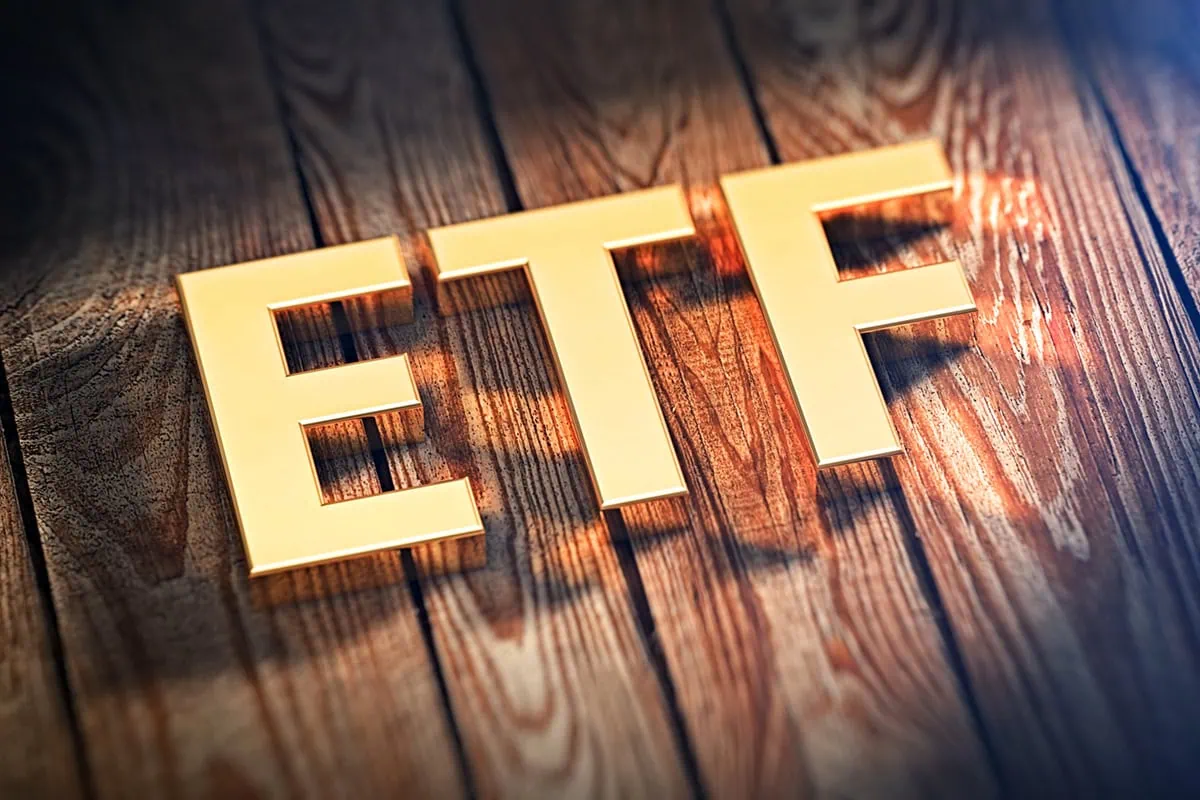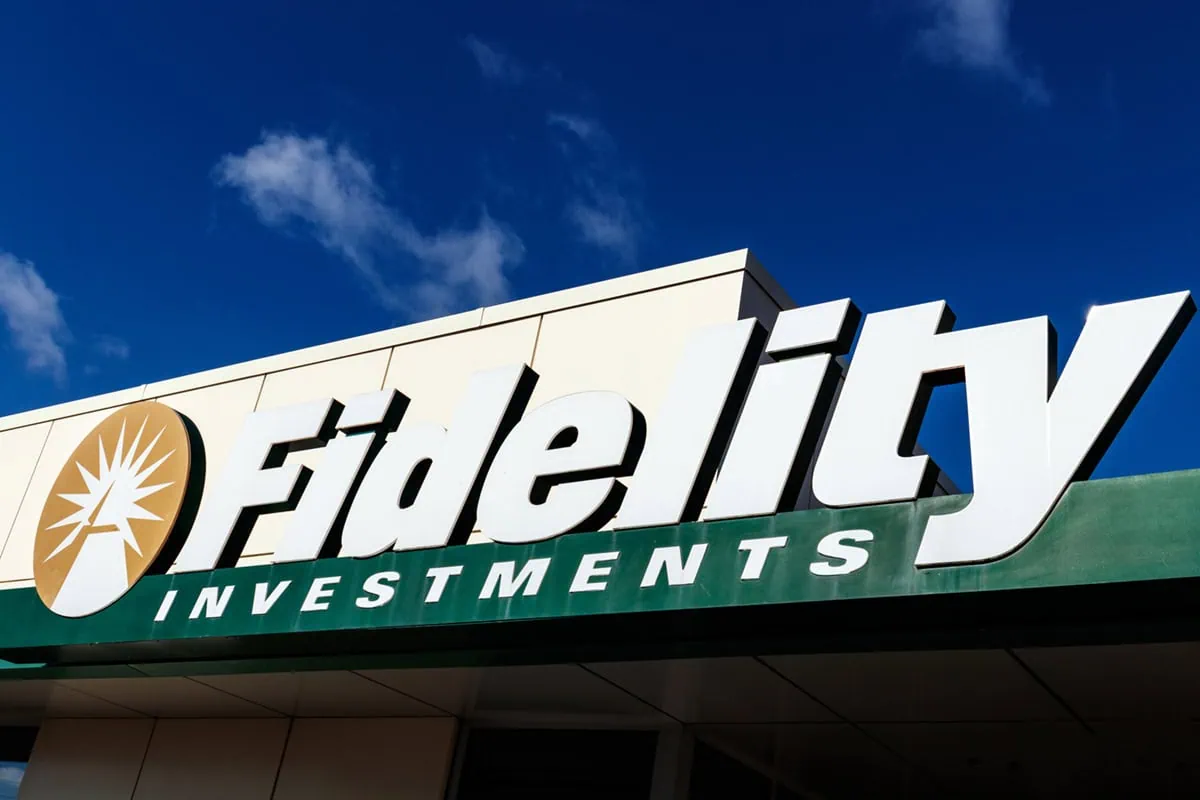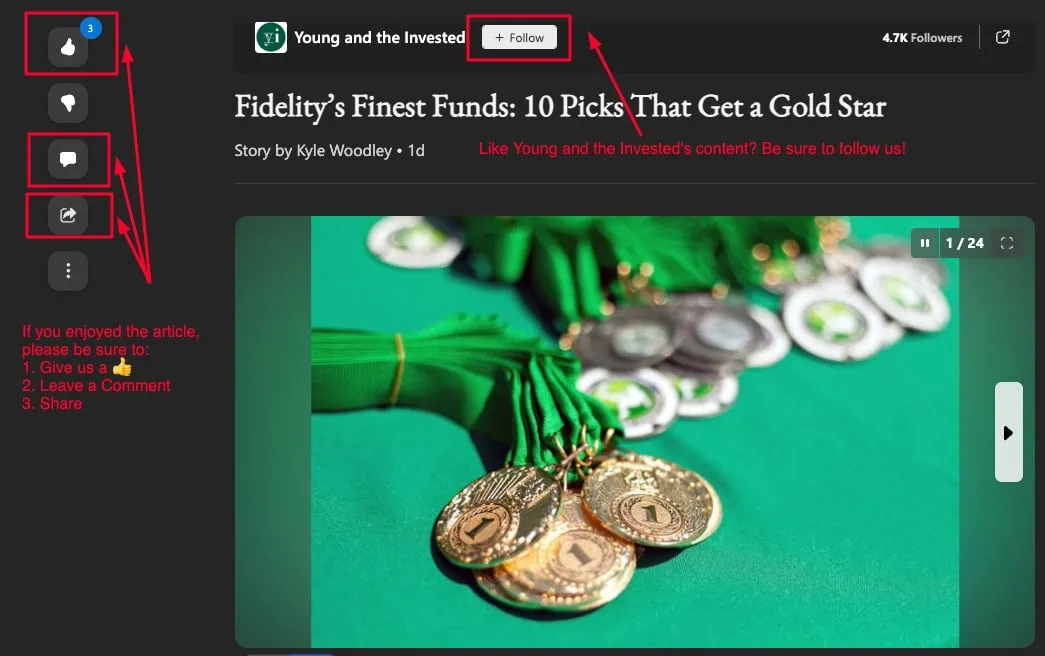One of the investment world’s least-ballyhooed corners also happens to be one of its most useful, at least to income investors. I’m talking about preferred stocks—and like with many other types of investments, the average person can do well to just buy them as a group: in this case, preferred stock ETFs.
Preferred stocks are a “hybrid” security, boasting some of the characteristics of stocks but also some bond-like qualities, that companies issue to raise money. And despite the name, they’re actually a secondary choice for publicly traded companies—preferred stocks rarely enjoy the spotlight. Whenever you read about Apple or Amazon or whoever’s stock going up, we’re talking about their common stock. Many companies don’t even have preferred stock, and even when they do, it rarely registers for most investors.
And that’s too bad—because preferred stocks can be an excellent source of high dividend income.
Let’s look at a few of the best preferred stock ETFs you can buy. If you’re new to preferred stocks, that’s OK—I’ll provide a brief explainer, discuss why you might want to use funds to buy preferreds, then look at a few of the top ETFs for the job.
Disclaimer: This article does not constitute individualized investment advice. Securities, funds, and/or other investments appear for your consideration and not as personalized investment recommendations. Act at your own discretion.
What Is Preferred Stock?

Virtually every time you see that little ticker next to a company name—Apple (AAPL), Coca-Cola (KO), and so on—that ticker is associated with the company’s common stock. Common stock represents equity in a company; in other words, it’s an ownership stake, which means the holder is entitled to a share of earnings and dividends. It also typically (but not always) grants voting rights on management decisions.
Preferred stock is … well, it’s sort of like that, but some of its features are actually more similar to bonds. Here’s a quick breakdown:
How Preferreds Are Like Common Stock
First, let’s look at some of the traits that preferreds share with common stock:
- Represents an ownership stake in the company
- Publicly traded
- Pays a dividend
- Can appreciate in value based on changes in a company’s prospects
How Preferreds Are Like Bonds
And now, here are some of the similarities between preferreds and bonds:
- Trade around a par value
- Typically doesn’t include voting rights
- Dividend is fixed, similar to a bond coupon
- Tends to be sensitive to interest rates
Those fixed dividends tend to be high, too—usually several times greater than the dividends paid on common stock. In fact, dividends typically constitute the majority of returns an investor will see from a preferred stock. But that’s also because the stock itself has far less appreciation potential than common stock. For that reason, preferreds are generally considered to be more defensive than common stock, but a little more aggressive than corporate debt.
Why Are They Called ‘Preferred’?

Preferred stocks get the name because they’re senior to (thus have preference over) common stock.
For one, dividends on preferred stocks must be paid before dividends on common stock. If a company wants to suspend the dividend on preferred shares, it must first do so to its common stock. And if the preferreds are “cumulative,” if a company wants to resume paying dividends on its common stock, it must first pay any preferred dividends that went unpaid.
Also, preferred stocks are higher than common stock on the “liquidation stack.” If a company has to liquidate its assets, bondholders have the first rights to those assets. Preferred shareholders come next, and whatever’s left over is dividend among common stockholders.
The Best Preferred ETFs

The benefits of investing in preferred stocks via mutual funds and exchange-traded funds (ETFs) are similar to the benefits you get from bond funds. Namely: unlike common stocks, there’s very little public information and analysis available on preferreds, making them even more difficult to research than your average equity.
And, of course, you receive the same benefit you get from any investment fund, which is immediate diversification with the click of a button—no having to manage a portfolio of preferreds yourself!
With that, let’s look at some of the best preferred stock ETFs you can buy.
Related: The 9 Best Dividend Funds You Can Buy Now
1. iShares Preferred and Income Securities ETF

- Assets under management: $14.6 billion
- SEC yield: 6.2%*
- Expense ratio: 0.45%, or $4.50 per year on every $1,000 invested
You can think of the iShares Preferred and Income Securities ETF (PFF) as a benchmark with which you can compare all other preferred ETFs. It’s the largest at well more than $14 billion—roughly the size of the next four largest preferred stock ETFs combined—and it was created in 2007, making it one of the oldest such funds.
PFF is an index fund that tracks the ICE Exchange-Listed Preferred & Hybrid Securities Index (USD). It currently holds 450 preferred stocks issued by U.S. corporations, and if you were to look at its provider page, you’d think those stocks were spread across three sectors: financials (70%), industrials (20%), and utilities (10%).
Close, but not quite.
In bond and preferred funds, “sectors” have looser interpretations. While financials and utilities are pretty much faithful representation of their stock sectors, “industrials” are a catch-all for many different sectors. Consider that even within its top-10 holdings, preferred stocks from technology firms MicroStrategy (MSTR) and Hewlett Packard Enterprise (HPE), as well as from materials company Albemarle (ALB), are listed as “industrials.” So the sector spread is a little different than it seems.
However, financial companies such as banks and insurers truly do dominate PFF’s portfolio, and you’ll generally find that’s the case with most preferred stock funds.
Like with bonds, preferred stocks can and do receive credit ratings, but they’re not as widely rated as bonds. With PFF, roughly 55% of the portfolio is considered investment-grade quality, while another 20% is in non-investment-grade (read: “junk”) territory. A full quarter of the fund is “not rated”—that doesn’t mean they’re necessarily of low credit quality, it just means they haven’t been rated by one of the three major agencies (S&P, Moody’s, and Fitch).
And as for yield? PFF is exemplary of the income potential of this asset class, currently sporting a 6%-plus yield that’s on par with junk-bond funds such as the SPDR Bloomberg High Yield Bond ETF (JNK) and the iShares iBoxx $ High Yield Corporate Bond ETF (HYG).
* SEC yield reflects the interest earned across the most recent 30-day period. This is a standard measure for funds holding bonds and preferred stocks.
Related: The 10 Best-Rated Dividend Aristocrats Right Now
Do you want to get serious about saving and planning for retirement? Sign up for Retire With Riley, Young and the Invested’s free retirement planning newsletter.
2. Fidelity Preferred Securities & Income ETF

- Assets under management: $70.1 million
- SEC yield: 5.0%
- Expense ratio: 0.60%, or $6.00 per year on every $1,000 invested
Next up is the Fidelity Preferred Securities and Income ETF (FPFD), which is different from PFF in a few ways—but ways that give FPFD a spot among the best preferred stock ETFs you can own.
Among the most obvious differences: Fidelity’s ETF is much newer (2021 inception), its assets are microscopic by comparison, and it’s actively managed, currently helmed by Brian Chang, Adam Kramer, and Parikshit Gandhi.
FPFD’s portfolio is smaller but still plenty wide at about 330 stocks. It’s difficult to make a direct sector comparison because Fidelity doesn’t explicitly break it out, but a quick look at holdings will tell you that it’s overloaded with financial preferreds, with a healthy allocation to utilities, and the rest spread out across “industrials.” Preferreds from JPMorgan Chase (JPM), U.S. Bancorp (USB), and Energy Transfer LP (ET) are among the top holdings at the moment.
One significant difference is that Fidelity’s preferred stock ETF is “global” in nature, holding not just U.S. stocks but a high level (60%) of international preferreds, too. Those are largely concentrated in Canada (22%), Japan (17%), and the U.K. (13%).
Credit quality is both better and better known. About 65% of the FPFD’s portfolio is investment-grade in nature, including mid-single-digit exposure to A-rated preferreds. Another quarter of assets is invested in preferreds rated BB, which is the highest level of junk. Only a thin sliver of PFPD’s preferred holdings aren’t rated.
So far, this strategy has made a meaningful difference. Average annual total returns (price plus dividends) over the trailing three-year period are a couple percentage points better than PFF, more than offsetting its higher fees and lower yield.
Related: 7 Best High-Dividend ETFs for Income-Minded Investors
3. Invesco Variable Rate Preferred ETF

- Assets under management: $2.3 billion
- SEC yield: 5.1%
- Expense ratio: 0.50%, or $5.00 per year on every $1,000 invested
The Invesco Variable Rate Preferred ETF (VRP) is an indexed preferred stock ETF whose makeup isn’t all that dissimilar to Fidelity’s fund: Its 325 holdings are largely financial in nature and provide exposure not just to the U.S. but also Canadian and other international preferreds. Credit quality is 65% investment-grade, 30% junk (most of which is in BB-rated preferreds), and 5% unrated.
And like all of the funds above, it also makes monthly dividend payments, as opposed to common stock dividend ETFs, which typically pay quarterly.
Where VRP stands out is the type of preferred stock it holds.
Invesco’s fund tracks the ICE Variable Rate Preferred & Hybrid Securities Index (Index). Many preferreds are fixed-rate in nature, which means the coupon they pay when they’re issued is the coupon they’ll pay indefinitely. But floating-rate preferreds pay a flexible coupon that changes over time based on a formula, though they usually have some predetermined yield floor they can’t fall below.
Why does that matter? When market interest rates rise, coupons on fixed-rate preferreds look less attractive than new preferreds offering higher yields, which sends their prices lower. But variable-rate preferreds retain their value because as market rates rise, so too do their yields. The other edge of that sword, of course, is that when market rates decline, so too can variable-rate preferreds’ payouts.
Put more simply: VRP can take better advantage of a rising-rate environment but might struggle compared to other preferred stock ETFs in a declining-rate environment. That might make Invesco’s preferred stock ETFs less attractive now against the backdrop of a dovish Federal Reserve and other central banks. But if interest rates look poised to rise once more, VRP could be one of the best preferred stock ETFs to have at your disposal.
Related: The Best Dividend Stocks to Buy
Want to talk more about your financial goals or concerns? Our services include comprehensive financial planning, investment management, estate planning, taxes, and more! Schedule a call with Riley to discuss what you need, and what we can do for you.
The 7 Best Dividend ETFs [Get Income + Diversify]

We love exchange-traded funds (ETFs) because they can provide one-click access to hundreds, even thousands of stocks, while charging often minuscule fees.
One way to put that low-cost diversification to work? Collecting dividends. But trying to choose from literally hundreds of income-producing funds could take up a lot more time than you have. So let us help you narrow the field—check out our list of seven top dividend ETFs.
9 Best Fidelity ETFs You Can Buy [Invest Tactically]

Investors often look to exchange-traded funds (ETFs) for cheap, passive exposure to basic broader market indexes like the S&P 500.
But Fidelity’s ETF suite really shines because in addition to some of those plain-vanilla offerings, Fidelity also provides more tactical ways of tapping into specific corners of Wall Street. See what we mean by checking out our list of the best Fidelity ETFs.
Please Don’t Forget to Like, Follow and Comment

Did you find this article helpful? We’d love to hear your thoughts! Leave a comment with the box on the left-hand side of the screen and share your thoughts.
Also, do you want to stay up-to-date on our latest content?
1. Follow us by clicking the [+ Follow] button above,
2. Subscribe to Retire With Riley, our free weekly retirement planning newsletter, and
3. Give the article a Thumbs Up on the top-left side of the screen.
4. And lastly, if you think this information would benefit your friends and family, don’t hesitate to share it with them!








